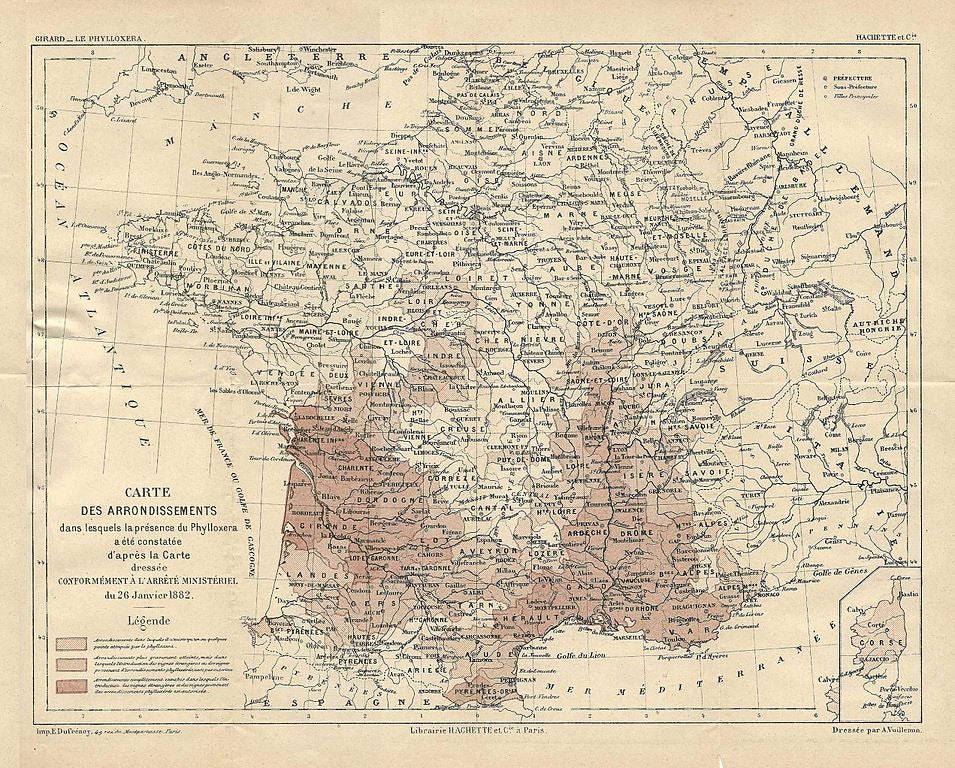Huh.More after the jump.
My initial reaction was "What about the Great French Wine Blight?"
Here's an 1882 map of the spread of the Phylloxera aphid and I'll be damned, the disaster didn't get too far north of the Loire at Orléans where the river makes that hard left turn:...
From the Economic History Society's The Long Run blog:
The phylloxera crisis in nineteenth century France destroyed 40% of the country’s vineyards, devastating local economies. According to research by Vincent Bignon, Eve Caroli, and Roberto Galbiati, the negative shock to wine production led to a substantial increase in property crime in the affected regions. But their study, published in the February 2017 issue of the Economic Journal, also finds that there was a significant fall in violent crimes because of the reduction in alcohol consumption.....MUCH MORE
It has long been debated whether crime responds to economic conditions. In particular, do crime rates increase because of financial crises or major downsizing events in regions heavily specialised in some industries?
Casual observation and statistical evidence suggest that property crimes are more frequent during economic crises. For example, the United Nations Office on Drugs and Crime has claimed that in a sample of 15 countries, theft has sharply increased during the last economic crisis.[1]
These issues are important because crime is also known to have a damaging impact on economic growth by discouraging business and talented workers from settling in regions with high rates of crime. If an economic downturn triggers an increase in the crime rate, it could have long-lasting effects by discouraging recovery....
And back to that June post:

Otherwise, I had thought the majority of the vines were now the Franco-American hybrids created for their resistance to the aphids and for the old stuff you had to get north of Paris, maybe up to Reims: Pinot Noir and Chardonnay to make your bubbly.
But I was wrong.
From The Guardian:
DNA testing shows 900-year-old savagnin blanc vines identical to modern plants....
....MORE